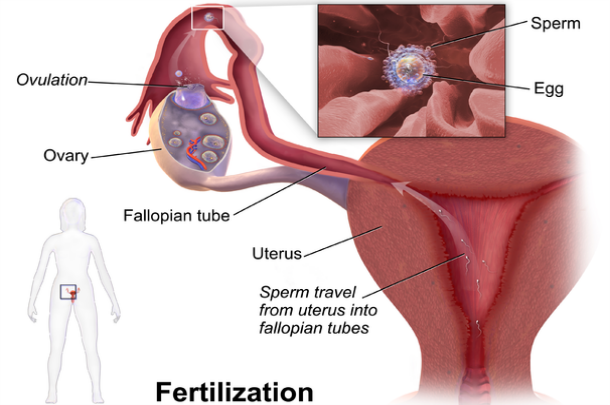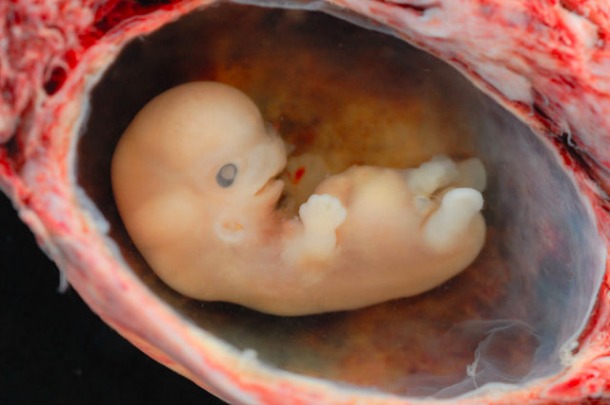Recent advances – both political and scientific – are enabling more and more LGBTQ and infertile couples to have children. There is currently a wide methods range of methods available, from adoption to surrogates. One thing that unites most of them, however, is the impossibility of creating a child genetically related to both parents. But new research using stem cells to create sperm and eggs suggests this could change in the future.
Scientists from Cambridge University and the Weizmann Institute of Science in Israel were able to create primordial germ cells (which go on to form eggs or sperm) using embryonic stem cells. Following this success, they used similar procedures combining human skin tissue and stem cells. Couples facing fertility issues could benefit from this technique and have children biologically related to both adults, without the need for egg or sperm donors.
“It’s remarkably fast. We can now take any embryonic stem cell line and once we have them in the proper conditions, we can make these primordial cells in five to six days”, says Azim Surani, who led the work at the Gurdon Institute in Cambridge. This also applies to the use of stem cells from the skin; however, it is important to distinguish between primordial cells, which then develop into sex cells like sperm and eggs, and gametes (sex cells) themselves. Surani explains that based on recent research:
It’s not impossible that we could take these cells on towards making gametes, but whether we could ever use them is another question for another time.
The SOX17 gene was crucial to these findings. The gene’s main function is to determine the development of stem cells into whatever tissue or organ is required. While it has been previously used in research to create lung, gut, and pancreas cells, this is the first time it has been part of a primordial germ cell specification (the creation of early stage gametes which can develop into a whole new human being).
Despite the importance of these advances, they are far from complete and face several obstacles in their real-world application. Even with the use of skin cells, two women would only be able to produce a female baby since both have XX chromosomes. Men, on the other hand, are XY and so could produce either a female XX baby or a male XY one. Beyond the wider ethical debate of breeding so-called “test-tube babies”, vehemently driven by conservative and religious groups, is the specific issue of manipulating gender. Two women only able to have female children, and two men deciding for themselves the gender of their child, pulls into question the morality of manipulating genetic traits of an embryo created through such scientific processes.
Of course, the implications in terms of the newborn’s health compensate for this. The technique, allowing women to create gametes from skin cells, would eliminate pregnancy and genetic problems associated with the ageing of eggs. This would be essentially a rewinding of the biological clock. Women would become less and less dependent on their bodies for childbirth, postponing having children until later in life.
Needless to say, this type of reproduction reliant on science would spark widespread debates on “natural” and “artificial” babies. Conservatives would certainly oppose these practices, regardless of the potential for loving infertile or homosexual couples to finally have the children they so wish for. However, the previously mentioned manipulation of genetic traits seems to be the strongest ethical barrier. While this may be justified in, for example, the removal of a gene for a serious health condition in an embryo, it is hard to imagine couples being able to choose the gender of their child due to technicalities of X and Y chromosomes in skin cells. Other social issues arise; for instance, would today’s often sexist, ultra-competitive office culture encourage women to delay childbirth to focus on work and so increase productivity? Surely this would limit women’s reproductive freedom as much as the banning of IVF (in-vitro fertilisation) or abortions would.
A world in which women participate in reproduction in a similar way as men, with less physical involvement there would be naturally, seems both scary and exciting. Humanity’s ability to control conditions of pregnancy, reproduction, and genetic disease is increasing; along with it is growing political backlash seeking to limit women’s reproductive choices as well as understandable feelings of uncertainty regarding lab-based childbirth.
British Law currently bans the use of artificial sperm and egg cells in lab fertilisation. Much more research is also necessary for fertilisation through stem cells to become a concrete possibility. While this practice could only become commonplace in the far future, and regardless of the ethical considerations that would come along with it, stem cell fertilisation is “really the foundation for future work”.




